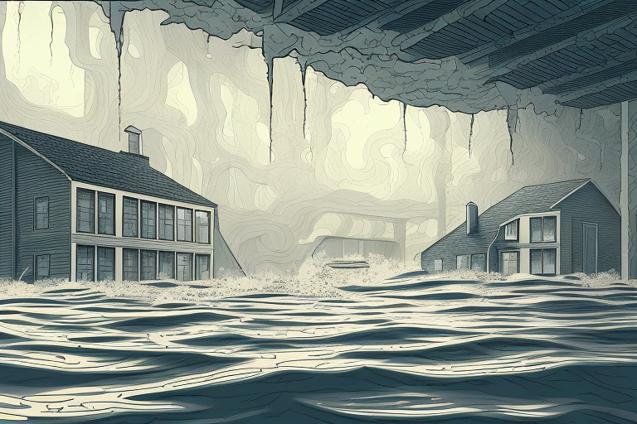
Discover the impact of rising sea levels on coastal communities and how sailors can help mitigate the effects.
The Impact of Rising Sea Levels on Coastal Communities
As we set sail on our adventures, exploring the world with our families, it’s essential to be aware of the environmental challenges that our planet faces. One of the most pressing issues is climate change, which has far-reaching consequences for the world’s coastal communities. In this article, we will delve into the impact of rising sea levels on these communities and discuss ways in which we, as sailors, can contribute to mitigating these effects.
Understanding Sea Level Rise
Sea level rise is a direct consequence of climate change, primarily caused by two factors: the melting of land-based ice (such as glaciers and ice sheets) and the thermal expansion of seawater as it warms. As the Earth’s temperature continues to rise, these processes accelerate, leading to higher sea levels worldwide.
According to the Intergovernmental Panel on Climate Change (IPCC), global sea levels have risen by approximately 3.1 millimeters per year between 1993 and 2017. While this may not seem like a significant amount, the cumulative effect over time can have devastating consequences for coastal communities.
The Effects of Rising Sea Levels on Coastal Communities
Rising sea levels pose a variety of threats to coastal communities, including:
1. Flooding and Erosion
Higher sea levels lead to more frequent and severe flooding, particularly during storm surges and high tides. This can result in significant property damage, loss of life, and displacement of residents. Additionally, rising sea levels contribute to increased coastal erosion, which can lead to the loss of valuable land and infrastructure.
2. Saltwater Intrusion
As sea levels rise, saltwater can infiltrate freshwater sources, such as rivers, lakes, and aquifers. This can lead to the contamination of drinking water supplies and the degradation of agricultural land, posing significant challenges for communities that rely on these resources.
3. Loss of Coastal Ecosystems
Coastal ecosystems, such as mangroves, salt marshes, and seagrass beds, provide essential services to both humans and wildlife. They act as natural barriers against storm surges, filter pollutants, and serve as critical habitats for numerous species. Rising sea levels can lead to the loss of these ecosystems, resulting in reduced coastal protection and biodiversity.
4. Economic Impacts
Coastal communities often rely heavily on industries such as tourism, fishing, and shipping. Rising sea levels can have significant economic impacts on these industries, as infrastructure becomes damaged or unusable, and natural resources are depleted.
Adapting to Sea Level Rise
While the challenges posed by rising sea levels are significant, there are steps that coastal communities can take to adapt and build resilience. Some of these strategies include:
1. Coastal Protection Measures
Communities can invest in infrastructure designed to protect against flooding and erosion, such as seawalls, dikes, and breakwaters. Additionally, restoring and preserving natural coastal ecosystems, such as mangroves and salt marshes, can provide valuable protection against storm surges and erosion.
2. Managed Retreat
In some cases, it may be more cost-effective and sustainable for communities to relocate away from vulnerable coastal areas. This process, known as managed retreat, involves the strategic relocation of infrastructure, homes, and businesses to safer locations inland.
3. Improved Land Use Planning
By incorporating sea level rise projections into land use planning, communities can ensure that new development is directed away from high-risk areas. This can help to minimize future risks and reduce the need for costly protection measures.
4. Community Education and Preparedness
Educating coastal residents about the risks associated with sea level rise and providing resources for emergency preparedness can help to build resilience and reduce the potential impacts of flooding and other hazards.
Our Role as Sailors
As sailors, we have a unique connection to the ocean and a responsibility to protect it. Here are some ways that we can contribute to mitigating the impacts of rising sea levels:
1. Reduce Our Carbon Footprint
By reducing our carbon emissions, we can help to slow the rate of climate change and, in turn, sea level rise. This can be achieved through actions such as using renewable energy sources, conserving water, and reducing waste.
2. Support Conservation Efforts
Supporting organizations and initiatives that work to protect coastal ecosystems and promote sustainable development can help to build resilience in coastal communities. This can include volunteering, donating, or simply spreading awareness about these efforts.
3. Practice Responsible Boating
As sailors, we can minimize our impact on coastal ecosystems by practicing responsible boating. This includes proper waste disposal, avoiding sensitive habitats, and adhering to local regulations and guidelines.
In conclusion, rising sea levels pose significant challenges for coastal communities worldwide. However, by understanding these impacts and taking steps to adapt and build resilience, we can help to ensure a sustainable future for both our planet and the generations of sailors to come. As we continue to explore the world with our families, let us remain mindful of our responsibility to protect the ocean and the communities that depend on it.